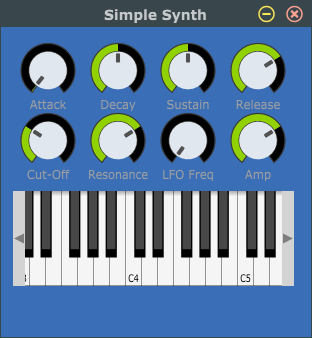Following up on my 2018 post I’ve taken a further look at Cabbage. Back in 2018 I could only get the standalone examples to work and they suffered from long latencies. The latest version 2.7.0 has installed reliably without long latencies. Furthermore, its packed with goodies not least ‘Export as VST and VST3’ and notably ‘Export as VCV Rack Module’. I’ve just played with a couple of standard paraphonic examples so far but everything worked and the VST export process is so simple and fast. The Cabbage scripts combine the UI with Audio processing so its really easy to maintain and see the relationships between controls and processing. The GUI graphics are tolerable and there are extensions that look like they may improve the imagery further. Signal flow is easy to follow in the scripts. Here’s a classic Analogue synth core; VCO, LPFilter, and LFO modulating filter cutoff, with ADSR modulating stereo output amplitude: and here's the relevant script: kADSR1 madsr iAtt, iDec, iSu...

